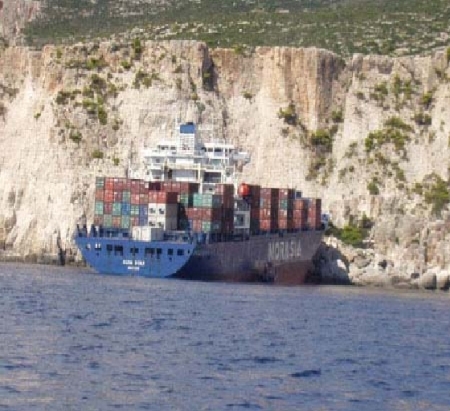Sadly, it is unlikely we will know for sure what happened to the Sailfish 25 sloop Ouzo after she disappeared from the Southampton/Portsmouth VTS Sandown Bay on the night of 21/22 August 2006. Neither the boat nor any debris has so far been found to provide conclusive evidence regarding her loss, only the three bodies of her crew. The UK’s Maritime Accident Investigation Branch believed that the tiny vessel collided with, or was swamped by, the ro-ro ferry Pride Of Bilbao, which encountered a small boat , invisible to radar which was spotted by its lights at about 300 metres, at 0107. After studying other available data a team from South Tyneside College proposed another vessel, the Crescent Beaune, which did not have a lookout posted at the time and whose path may have crossed the Ouzo at 0140.
Regardless of how the Ouzo was lost, there are lessons to learn from the investigation.
Through a glass darkly
The lookout wore photochromic lens spectacles, the type that darken in sunlight and revert to clear in darkness. When the lookout’s spectacles were examined by the Institute of Ophthalmology, UCL, London, they found what the MAIB terms ‘startling results’: Put simply, at most only 80 per cent, and probably less, of light got through the lenses when they were most clear, ie. with no darkening effect, compared to between around 95 per cent and 99.5 per cent for non-photochromic lenses. This may provide one reason why the lights of the yacht were not spotted earlier. The effect was not apparently known to opticians and ophthalmologists before this study.
True, there are better-performing photochromic lenses available, but it seems best to avoid photochromic lenses while carrying out vision-critical duties. at night. In fact, there’s no point in wearing photochromic glasses at night, prehaps a spare pair of plain or coated ‘night spectacles’ is the answer.
Dark adaption: Starting at zero
Most of us are aware that it takes at least 30 minutes for vision to adapt to darkness. For the first five or six minutes of darkness we get a subjective sense of immensely improved night vision, but what is adapting are the relatively insensitive cone photoreceptors in the eyes, not the rod receptors that enable us to see dim lights when fully adapted at 20-30 minutes.
Red lighting at the chart-table gave The Pride Of Bilbao’s second officer headaches so he removed the red filter. Since he checked the chart regularly throughout the passage the chances are that his nightvision was poor.
Because bridge black out procedures were not compolete, when the lookout entered the chart room prior to taking up his duties, he was faced with the unshielded white light at the chart table, which reset his dark adaptation to zero. Significantly, he spotted the small boat lights nine minutes after he began his lookout duties, about the time the rod receptors in the eyes were beginning to kick in.
The optimum period for handover at night, clearly, would be 20 to 30 minutes, which is probably impractical on most ships, 10 minutes may just be acceptable but 15 minutes might be a good compromise.
And make sure blackout curtains protect the lookout’s night vision.
Deadly lifejackets
Whether you’re a professional mariner or a ‘yachtie’ a badly fitted lifejacket can kill you. Survival expert Frank Golden studied the lifejackets found on the bodies of the three yachtsmen. Although all three lifejackets were inflated only one was fitted properly and there is evidence that the wearer survived the longest, as much as 12 hours after the incident.
Crotch straps might have overcome the bad fitting of the lifejackets but none of the lifejackets had one.
None of the lifejackets had lights that could have alerted passing vessels to the wearer’s predicament.
Obvious lessons: make sure you know how to don a lifejacket properly.
If you’re a yachtie, spend the extra few bucks for the optional crotch strap and light.
Reflecting on radar
Even though the yacht was spotted visually at around a mile, it did not show on radar, possibly because the X-band radar was set to automatic sea-clutter control.
The Ouzo carried a flat-pack octahedral radar reflector. The performance of this equipment is questionable even in the optimum orientation, called ‘rain catcher’ but when hung on a halyard by the available fittings and holes they tend to default to ‘catch bugger all’, which, combined with a yacht’s low radar signature makes a small vessel virtually invisible.
MAIB’s advice is: “In areas where small craft may be expected, it is good practice, when using automatic sea clutter, to regularly change to manual control to improve the chances of detecting them. During this incident, the second officer did not do so in an area where small yachts might be encountered, especially during the summer months.”
If you own a small vessel, make sure the radar reflector meets ISO8729:1999



 Posted by Bob Couttie
Posted by Bob Couttie 



 Click here
Click here



